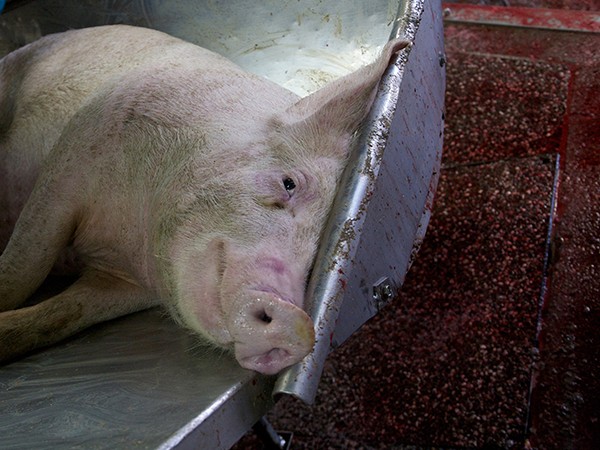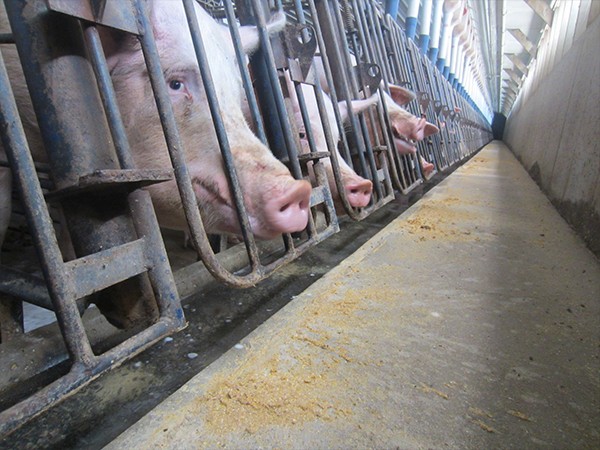|
|
Pigs, cows, chickens, fish, and other animals at factory farms experience unimaginable cruelty. Mercy For Animals investigations have uncovered routine abuse and violence at these facilities, including animals being kicked, punched, stabbed, stomped to death, and skinned alive. But factory farms are not just a nightmare for animals.
Between December 2018 and March 2019, campaigners from Greenpeace visited communities in Denmark, France, and Italy to document the impact of factory farms on local residents. These are some of their stories:
Denmark
For more than 20 years, former high school teacher Bente Jørgensen and her husband, chemical engineer Søren Hansen, have lived in the village of Tingerup, Denmark. The village is a mere 100 meters from the massive Vandvaerksgaarden pig farm. Jørgensen said the farm’s odor is so strong that she has to wear a face mask outside:
The smell is so awful that it makes me feel sick. My head aches and my eyes are red and swollen. I feel that our lives are destroyed because of the smell, noise and dust from the farm.
Because of the stench, Jørgensen and Hansen limit their time outdoors, and they worry about long-term negative health effects of constant exposure. To make matters worse, although Danish law requires that bodies of dead animals be covered and not visible, neighbors often see dead pigs outside the farms.

France
The French village of Lescout sits just 500 meters from the Gallès SAS egg farm, which has grown to hold around 185,000 hens—outnumbering the village’s human population by more than 250 times—and the farm’s owner plans further expansion. Cathy Double, a former teaching assistant at the local school, said:
During some mornings, the smell was so corrosive in the throat and nose that for the sake of children’s safety, we preferred to keep them indoors during playtime.
Italy
The small Italian village of Cadelbosco is located near two huge pig farms in the Emilia-Romagna region. Resident Adalgisa Martorelli suffers from respiratory issues that worsen when odor from the pig farm is particularly strong.
The smell has repeatedly forced Martorelli to leave her home, and she has even been hospitalized. She sometimes has to wear an oxygen mask at home.

The United States
Things aren’t any better in the States. Elsie Herring is a 67-year-old native of North Carolina, where each year pig factory farms produce nearly 10 billion gallons of waste.
Feces and urine are stored in large open-air lagoons that turn “Pepto-Bismol pink” from bacteria. Farmers occasionally apply the liquid waste to “sprayfields” with high-pressure guns in an effort to prevent the lagoons from overflowing.
Mist from sprayfields often drifts into neighboring communities, sickening residents. Runoff from factory farms can contaminate rivers and groundwater, threatening ecosystems and endangering people and wildlife.
Herring lives just feet away from one of these sprayfields. When the wind blows west, she can’t keep her windows open. “You can smell the odor inside,” she said. “The feces, the ammonia—all that stuff—we have to breathe it in, because we have to breathe.”
She also describes physical symptoms like headaches, stomachaches, excessive coughing, watery eyes, and the urge to vomit. Nearby residents are also often anxious and depressed from the helplessness they feel and the lack of relief from the stench.
We can withdraw our support of factory farming by choosing more plant-based foods. For delicious recipes and easy meal ideas, order your FREE Vegetarian Starter Guide today!